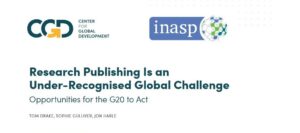
Socio economic factors influence low birth weights in Nepal
According to research, 27% of all children born in Nepal have low birth weight and over three-quarters of the new born deaths in Nepal occur in these low birth weight babies.
A recent research article published in the Journal of Nepal Paediatric Society has identified age, economic status, nutrition and health check-up during pregnancy as the main factors affecting low birth weight in Nepal.
“Children born to mothers above 35 years of age, living in joint-families and having low economic status were found to have given birth to babies with low birth weight,” explains Dr Manju Shrestha, lead author of the article.
Children weighing less than 2.5kg at the time of birth are considered to be low birth weight, according to the World Health Organization definition.
“Low ANC (ante-natal care) visits, not using folic acid and smoking and drinking habits were also associated with low birth weights,” she adds.
The research was carried out among 350 children admitted in NICU (Neo-natal Intensive Care Unit) of Tertiary Care Teaching Hospital, Chitwan, Nepal between October 2012 and September 2014.
“I, along with my colleagues, carried out the research because it was very painful to see so many children dying due to low birth weight,” says Dr Manju Shrestha.
As low birth weight is the main cause of child mortality in Nepal, finding out the causes behind it and working on improving them is crucial to improving child health. Nepal still has a neonatal mortality rate of 33 per 1000 live births, which, according to Dr Shrestha, is very high compared to the neighbouring countries.
“There is no option to addressing the factors affecting low birth weight if we want to decrease child mortality rates,” she says.
Dr Shrestha advises increased number of trainings on neo-natal health, better access to nutritious food and vitamin and iron supplements during pregnancy to reduce low birth weight.
The article “Socio Economic and Maternal Reproductive factors affecting Low Birth Weight Babies in Central Nepal” by Manju Shrestha, Sweta Kumari Gupta, Bhawani Kant Sharmah and Manish Baidya appears on Journal of Nepal Paediatric Society 2016, 36(3) pages 277-283. It can be accessed online on NepJOL platform supported by INASP.
About the journal
Journal of Nepal Paediatric Society is the official journal of the Nepal Paediatric Society. The triennial open access and peer reviewed journal was be previously published under the name “NEPAS Journal”.
About NepJOL
NepJOL hosts over 115 journals published from Nepal, covering the full range of academic disciplines. The objective of NepJOL is to give greater visibility to participating journals and to the research they convey. NepJOL was initiated in June 2006 and officially launched in September 2007. It is a project supported by INASP and locally managed by Tribhuvan University Central Library. It aims to promote the awareness and use of Nepal-published journals in all disciplines by providing access to tables of contents (TOCs), abstracts and full text on the internet.
About INASP
Founded in 1992, INASP is an international development organization working with a global network of partners in Africa, Latin America and Asia. In line with the vision of research and knowledge at the heart of development, INASP works to support individuals and institutions to produce, share and use research and knowledge, which can transform lives.
INASP’s approaches are based on the core pillars of capacity development, convening, influencing and working in partnership. INASP promotes equity by actively addressing the needs of both men and women across all our work and addressing issues of power within the research and knowledge system. INASP has projects in 28 countries, supporting all aspects of research and knowledge systems, from facilitating the provision of information to researchers to helping parliamentarians and civil servants to use research and evidence in policy making.
Disclaimer: Research published in journals hosted on the NepJOL platform is selected by the journals in accordance with their own editorial processes and criteria. INASP and Tribhuvan University Central Library provide hosting and guidance on good practices but are not involved in selection of research.
For further information
Thakur Amgai, Communications Consultant, INASP
Email: tamgai@inasp.info
Dr Sangita Shrestha, Communications Officer, INASP
Email: sshrestha@inasp.info

 Previous Post
Previous Post Next Post
Next Post


